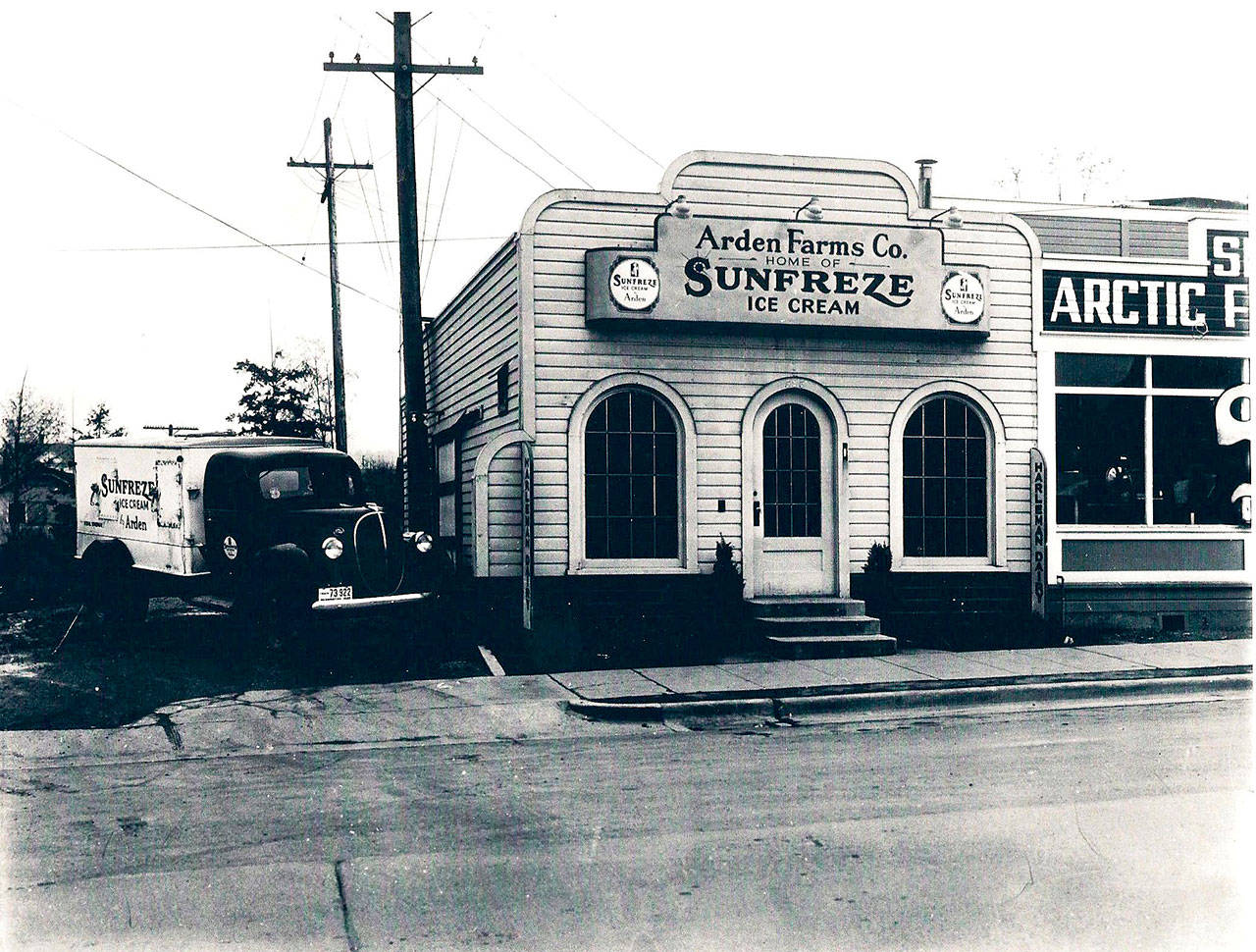NO ONE RECOGNIZED the April Picture from the Past.
There were several guesses that it might be Camp Hayden, but it is the Makah Air Force Station.
The photo was taken sometime in the 1950s.
The Makah Air Force Station was one of 28 stations built as part of the second segment of the Air Defense Command permanent radar network, according to http://tinyurl.com/PDN-Station.
The website relates the following history:
Prompted by the start of the Korean War on July 11, 1950, the secretary of the Air Force sought approval from the secretary of defense to expedite construction of the permanent radar network.
Receiving that approval July 21, the Air Force directed the Corps of Engineers to proceed with construction.
The land for the site was leased from the Makah Tribe.
The 758th Aircraft Control and Warning Squadron was activated at Bahokus Peak on Nov. 27, 1950.
The squadron began operating a long-range search radar and a height-finder radar, and the station was at its start a ground-control intercept (GCI) and warning station.
The squadron’s role as a GCI station was to guide aircraft toward unidentified intruders detected by the radar scopes.
The station was renamed Makah Air Force Station on Dec. 1, 1953.
In 1960, the station became part of the Semi Automatic Ground Environment (SAGE) system, sending data to McChord Air Force Base.
The squadron was redesignated the 758th Radar Squadron (SAGE) on April 1, 1960.
The squadron gave information at all times to the SAGE Direction Center, where it was used to determine range, direction, altitude, speed and whether aircraft were friendly or hostile.
The station’s equipment was upgraded throughout the years to improve efficiency and the accuracy of the information being gathered.
On June 15, 1988, the squadron was made inactivate, and the Air Force reduced its presence at the station, shutting most facilities.
The radar site was turned over to the Federal Aviation Administration.
A small detachment from McChord Air Force Base was assigned to maintain the radar equipment.
In the late 1990s, the AN/FPS-91A radar was replaced by an FAA-operated ARSR-4 radar, which now is at the site as part of the Joint Surveillance System, the website concluded.
The former station has been turned over to the Makah Tribe, which turned the base into its Makah Tribal Council Center. The tribe makes good use of the former Air Force buildings, and it is well-maintained.
Louis “Bud” Maraschiello sent several photos of the base at the time he was stationed there from 1955 to 1957.
After two years stationed in Guam, Bud arrived at Neah Bay in August 1955.
He was originally from Arizona from a town of 50,000 or so population, and Neah Bay was quite different from what he was used to.
The base had 70 people stationed there with radar crews and support personnel for the radar.
It was fairly self-sufficient with a small mess, NCO Club, little barbershop and four two-story barracks for enlisted men and one barrack for officers.
There was a day room with the office of the commanding officer, clerk offices and a pool table.
Bud had never been to such a small place. It didn’t take long to get to know one another.
Bud was very popular as he had one of the few cars on the base. Their duty was nine days on duty and three off.
On their days off, the crew went into Port Angeles and stayed at an old hotel at the end of Front Street.
The boys were all underage, so they couldn’t drink at the bars.
Bud met a Port Angeles girl, Shirley Coker, at a dance.
She was a high school girl and they remained friends while he was stationed at base.
When he was discharged in September 1957 from Payne Field, he didn’t contact her for more than 60 years.
He recently sent her the photos that are in the paper.
I received comments from Steve Pendleton, the program manager for the Native American Lands Environmental Mitigation Program.
He oversees and manages Native American lands and their environment for impacts to tribal resources and environment due to Department of Defense activities.
Pendleton said the lower camp (cantonment area), which was barracks, commissary, NCO Club, etc., is now all a part of the Makah tribal complex.
There is still a radar unit operated by the FAA on the mountain. The unit is mostly automated.
Carl Chamblin of Neah Bay remembered coming to Neah Bay in May 1962 after receiving his basic training and schooling.
He was from a little town in Ohio, so Neah Bay was larger than where he was from.
He was a height-finder radar operator. He was discharged in November 1965 but came back to work as a civil servant for the Air Force.
He married a local girl and still lives in Neah Bay and works for the tribe.
The Air Force personnel left in 1988, but seven civil servants stayed on as caretakers until June 30, 1989.
Dick Wilhelm and Margaret Levitan thought it could be Camp Hayden or Forks.
Judy Sipes of Sequim sent a link to photos and history of the Air Force base.
________
Alice Alexander is a Clallam County historian, author, and a descendent of an Elwha Valley pioneer family. She is a recipient of a 2014 Clallam County Heritage Awards. She can be reached at bretches1942@gmail.com.
Alice’s Clallam history column appears the first Sunday of every month, alternating with Linnea Patrick’s Jefferson County history column on the third Sunday of the month.

